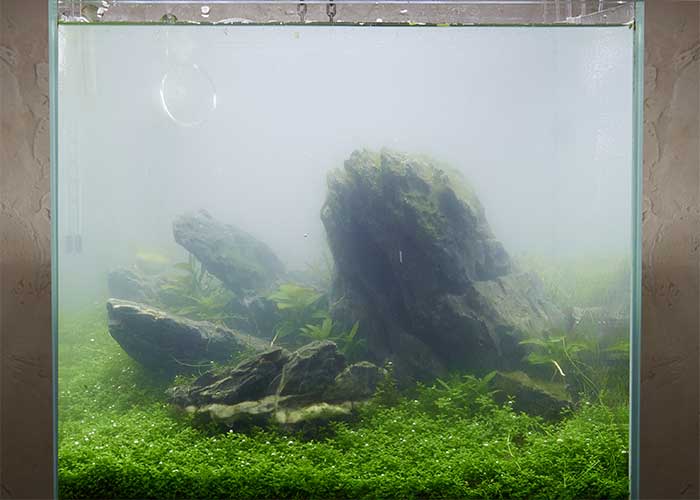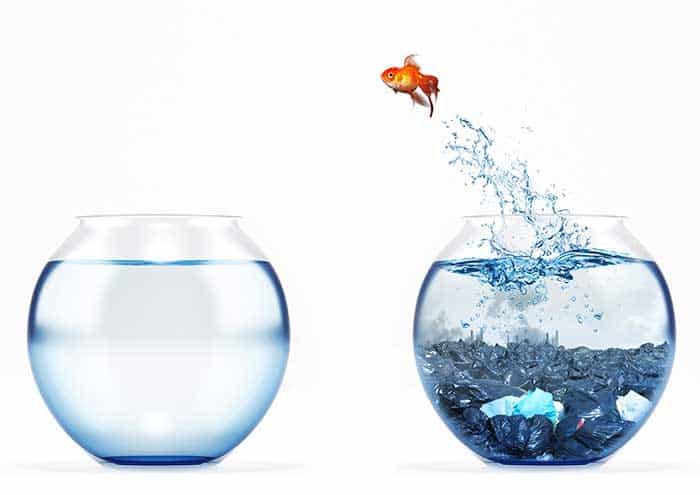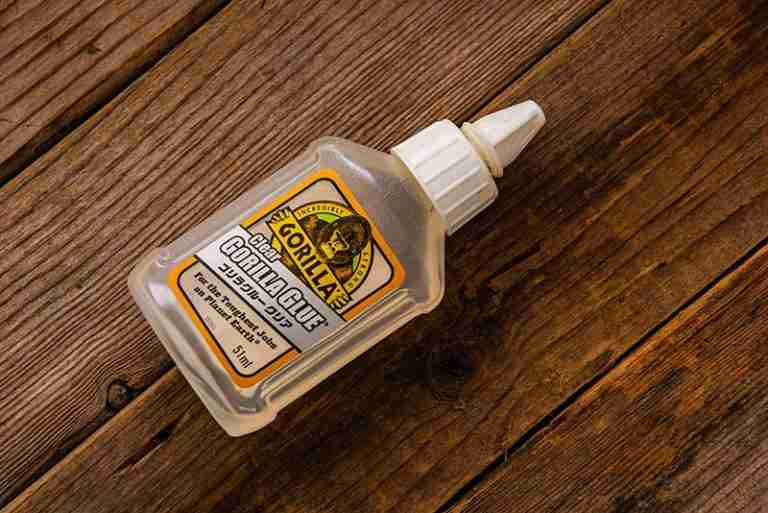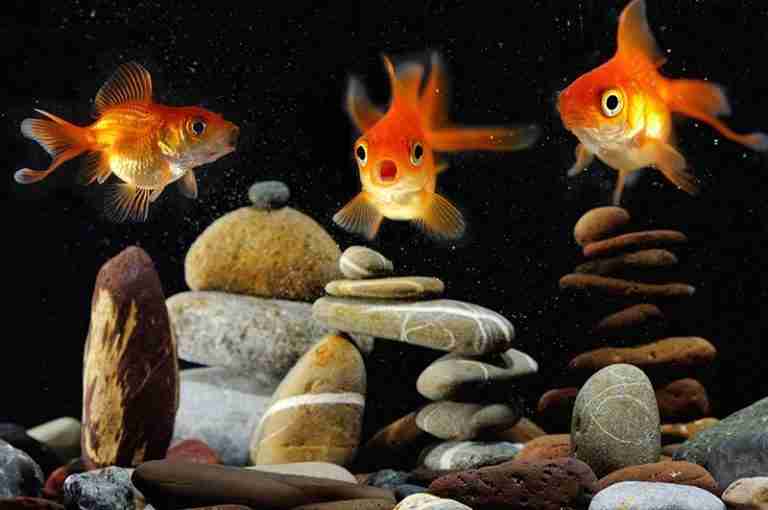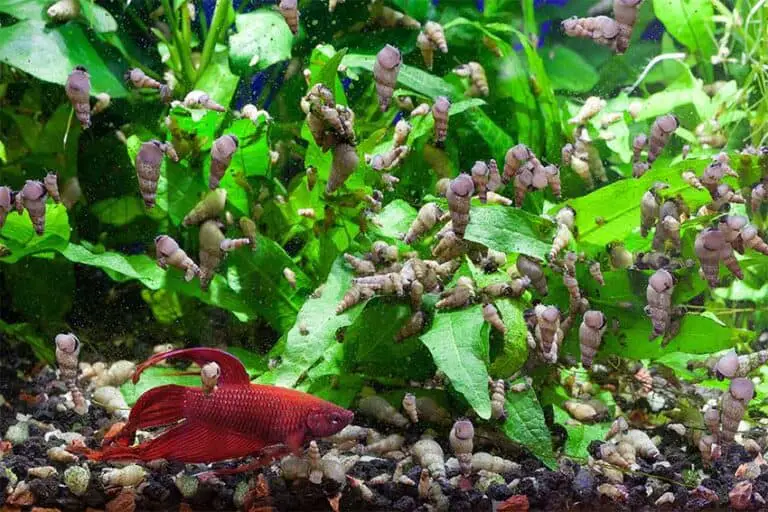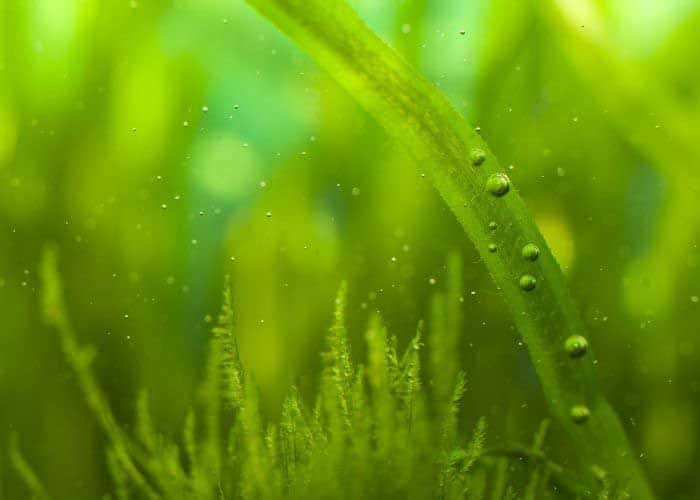How To Clean Fish Tank Decorations (The easy way)
Fish tanks require regular cleaning to dispose of fish waste and uneaten food. However, fish tank decorations can be challenging to clean because of their intricate designs.
This guide shows you how to clean fish tank decorations easily so that your aquarium always looks its best.
Below are the basic steps to clean fish tank decorations:
- Fill a bucket or sink with warm, clean water. If your decorations are not made of plastic and won’t be damaged by heat, you can use hot water.
- Carefully remove each decoration without disturbing nearby plants.
- Run each decoration under a tap to remove loose debris and place it into the sink or bucket filled with water.
- Scrub your tank decorations/ornaments. You can use a small toothbrush to get into difficult-to-reach areas. Delicate decorations will require a soft brush.
- Rinse under running water to remove any other debris.
- Put your clean aquarium ornaments back into the tank from where you took them, being careful not to damage the glass and nearby plants.
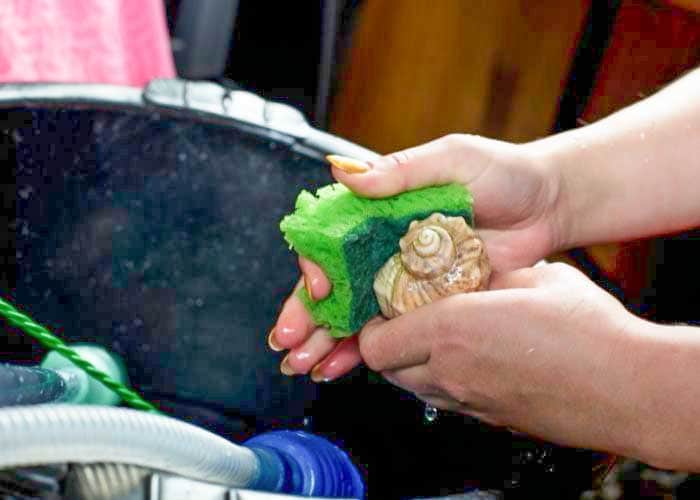
As you can see, the basic cleaning steps are pretty straightforward but not always as simple as they should be. Sometimes decorations have tiny crevices or are covered in algae, which can be challenging to remove.
Aquarium Tools
Many of the steps throughout this article require the aquarium equipment and chemicals listed below:
- A fish net
- A clean bucket
- A small soft brush or a toothbrush
- An algae scraper
- An aquarium sponge
- Household bleach
- White Vinegar
- Baking Soda
- Lemon Juice
Aquarium cleaning tools can be found online or in most pet stores, and the chemicals are standard household items.
If you are struggling with hard-to-remove dirt, stains, or algae, keep reading for some helpful tips.
Can You Clean Aquarium Decorations With Bleach?
You should carry out regular aquarium maintenance and clean with warm or hot water with some gentle scrubbing, which removes most debris, although it doesn’t work with stubborn dirt, stains, or algae.
If you have difficulty cleaning your aquarium decorations with water, you can use a weak bleach solution. Using bleach is an excellent way to remove stubborn dirt and has the benefit of sterilizing simultaneously, which is often necessary after an outbreak of parasites or disease.
Although you can use bleach on most ornaments and decorations, caution should be exercised as some materials, such as wood and resin, can be damaged. It is always advisable to test on a small, hidden area first.
How To Clean Aquarium Decorations With Bleach
Cleaning your fish tank decorations with bleach is much the same as using water, but you will make a weak bleach solution for the main cleaning.
Here is a step-by-step guide on how to clean fish tank decorations with bleach:
- Fill a bucket or sink with a 10% bleach solution, one part bleach, and nine parts water. It is essential to use a very weak bleach solution.
- Soak one or two decorations in the bucket or sink for around 15 minutes.
- Gently scrub the decorations with a toothbrush to remove any stubborn dirt. Bleach is an irritant, so use caution and wear some rubber gloves.
- Rinse the aquarium ornaments thoroughly in warm tap water to remove any bleach residue, and consider using a de-chlorinator to neutralize any remaining bleach before putting them back into the fish tank.
As you can see, the cleaning process using bleach is not much different from using water. The main difference is the solution that you soak the decorations in and that you need to rinse them very well afterward.
When using bleach, it’s essential to make a weak solution, as concentrated bleach can damage some aquarium decor, usually by removing color. It’s also necessary to rinse ornaments thoroughly after cleaning, as bleach residue can be harmful to your tank. The use of a de-chlorinator is optional, as thorough rinsing should be enough to remove the remaining bleach.
Bleach is a strong alkaline (base) with a pH of around 11-13, and this can drastically raise the pH of your tank, causing your fish to suffer pH shock. Because the solution you use should be weak, it shouldn’t cause any harm, but it’s better to play it safe.
Regular cleaning with bleach isn’t recommended, as it kills the beneficial bacteria found throughout your tank, including the bacteria attached to ornaments.
I found the video below on Youtube discussing using bleach to clean fish tank decorations.
How To Clean Aquarium Decorations Without Bleach
If you are not happy to use bleach, or your ornaments won’t tolerate a bleach dip, there are other options to consider.
Vinegar is a popular choice among aquarists, and I explain the process of using vinegar in the next section.
You should consider two gentler options for very delicate ornaments: lemon juice and baking soda. Both help to clean decorations and release stubborn dirt while remaining gentle.
Lemon Juice
Lemon juice is an entirely natural solution with high levels of acidity. The acids work on many types of grease and dirt, loosening it enough so that you can clean it with a brush or under warm running water.
Lemon juice is not as strong as bleach, so it won’t damage your decorations, but it’s also not suitable as a sterilizing agent.
The lemon juice dip can be made as strong as you like, with some people making a neat lemon juice dip for really stubborn dirt and stains.
The process of dipping in lemon juice is the same. Dips can be for up to 30 minutes, and you should give special attention to the rinse.
Lemon juice is acidic and can lower the pH of your tank quite quickly, especially if the pH is already neutral or slightly acidic.
Baking Soda
Baking soda is another gentle way to clean your aquarium decor without using bleach. It has a high alkalinity (pH of 8.4), making it ideal for removing dirt and grime.
The process of using baking soda for cleaning is the same as using bleach, except you need to make a baking soda solution rather than a bleach solution.
To make the baking soda solution, add one tablespoon of baking soda to each gallon (4.5 liters) of water.
Soak the fish tank decorations in the baking soda solution for around 15 minutes while the active ingredient (bicarbonate) helps lift dirt from the surface. Rinse thoroughly under running water.
Alternatively, you can make a baking soda paste for stubborn dirt and dab it directly onto the area you need to clean.
How To Clean Aquarium Decorations With Vinegar
As I have already mentioned above, vinegar is very popular among aquarists and is used worldwide in many cleaning applications.
Like lemon juice, vinegar is acidic with a pH of 2-3. Vinegar is a solution made up of water and acetic acid, which gives its acidity.
If you have an old dirty tank with severe calcium build-up, a neat vinegar solution can help with a full tank clean, quickly eating through the calcium deposits that cause hard water stains on aquarium glass.
The same is true for a clogged filter which can be left to soak in vinegar overnight, leaving it sparkling in the morning.
You can use vinegar to clean aquarium decorations in two ways. You can make a dip or use it as a spot cleaner.
- To make a vinegar dip, add equal parts water and vinegar to a bucket or sink and let the fish tank decorations soak for around 30 minutes. You may need to leave them longer if they are very dirty.
- After soaking, scrub the decorations gently with a toothbrush and rinse under warm running water. The vinegar smell will dissipate quickly once the decorations are dry.
- If you don’t want to soak your decorations, you can use vinegar as a spot cleaner. Apply some vinegar to a cloth or sponge and rub it over the dirty areas of all the decorations.
- Leave the vinegar to soak into the dirt for 15-30 minutes before scrubbing gently with a soft brush, and rinse well with warm tap water.
A strong vinegar solution kills bacteria and parasites easily, so it’s suitable for sterilization.
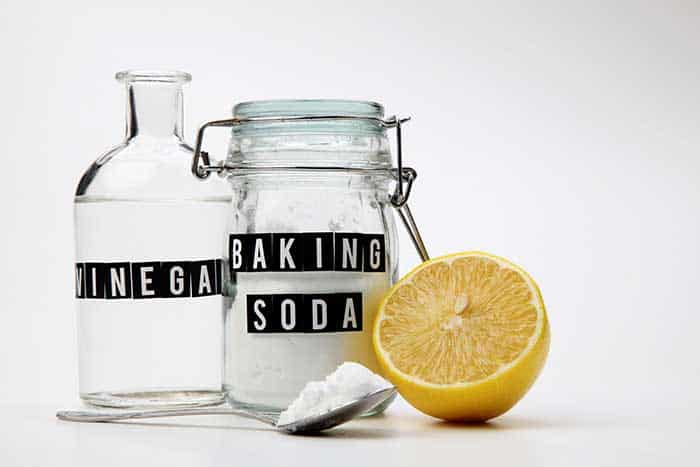
Remember, vinegar is an acid, so it can lower the pH of your fish tank if used too frequently. It is best to use it sparingly and regularly monitor your fish tank’s pH.
How To Clean Plastic Aquarium Decorations
Plastic is pretty robust and shouldn’t be damaged by a weak bleach solution, but always spot-test on a small section first.
Plastic can withstand a vinegar, baking soda, or lemon solution. Your main concern with plastic is heat, especially on delicate plastic plants.
When doing a water-only clean, I often use hot water as it’s usually enough to loosen most debris, but plastic can become distorted easily when subjected to high temperatures.
If you have algae on your plastic plants and decorations, which is difficult to remove, a weak 10% bleach dip will kill the algae, and it will likely just fall away with some gentle scrubbing with a soft brush or algae pad.
A strong 50% vinegar solution also works well at killing and removing algae.
How To Clean Aquarium Rocks
Aquarium rocks can be easy to clean, provided you are not growing any live plants or mosses on them.
Bleach, vinegar, lemon, and baking soda can all be used to clean aquarium rocks, but this it’s not possible when covered with moss. If you are growing live plants, it is better to leave your rocks and scrub around them with a bristled brush.
Aquarium rocks carpeted with moss that has attracted significant algae should be cleaned with a gravel vacuum. You can gently press onto the moss, and the suction should release most of the algae and debris.
You can also remove algae by hand, which can be pretty slow and painstaking, but it’s less damaging to your plants and moss.
You can use a bleach solution to clean aquarium plants, but you can’t submerge their roots as it will kill them. Bleach dips are best used for plants that you can easily remove from the fish tank.
Cleaning Aquarium Rocks With Bleach
If your aquarium rocks are plant free, you can use bleach to clean them. Some rocks are made from clay, limestone, or other soft materials and minerals that may not react well to bleach. As mentioned before, spot-test the rock base first to check for color fading or damage.
Most aquarium rocks are fine when cleaned with a 10% bleach dip. Soak for 15 minutes to let the bleach solution seep into small crevices, killing germs and parasites. Soak in plain warm water while gently scrubbing for another 15 minutes to remove the bleach residue before returning to the tank.
Cleaning Aquarium Rocks With Vinegar
Vinegar is a less harsh cleaning alternative than bleach and can be used on most aquarium rocks. Depending on how dirty your aquarium rocks are, you can use vinegar at full strength or dilute it with water.
For very dirty aquarium rocks, soak in full-strength vinegar for 30 minutes before scrubbing gently and rinsing well.
Do I Need To Clean New Aquarium Decorations?
It is always advisable to clean anything new before adding it to your tank, as you don’t know where it has been before. Many decorations are made in countries such as China, so they have traveled long distances.
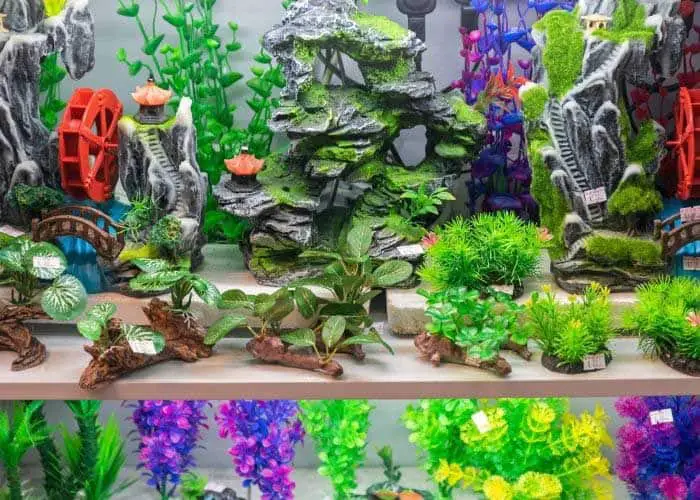
Most diseases and parasites enter your tank when adding new fish, plants, or decorations, and there’s no need to take the risk with your tank and its inhabitants when a quick clean or sterilization only takes 15 minutes.
How To Clean Aquarium Decorations Before First Use
I highly recommend using a 10% bleach solution or a strong 50% vinegar solution when cleaning aquarium decorations before their first use. They won’t require cleaning, but they should be sterilized to kill any germs, bacteria, and parasites.
You can leave your new decorations in your chosen cleaning solution for 15 minutes and then rinse thoroughly without any need for scrubbing, and they will be fine to add to your tank.
How Often To Clean Aquarium Decorations
If you clean your fish tank ornaments every 2-4 weeks, intensive cleaning using bleach and vinegar shouldn’t be necessary. Dirt and algae only become hard to remove if left for several months, requiring far more effort to clean.
Regular cleaning helps to keep your aquarium healthy while maintaining good water quality. You do not always need to remove your decorations from the tank, as some gentle scrubbing with a bristled brush while they are still in situ, will often be enough.
Regular aquarium maintenance also helps identify algae outbreaks in your aquarium environment before they get out of hand. You can take steps such as reducing light exposure and keeping your tank clean of debris to reduce algae growth.
Wrap Up
Although it may seem obvious, beginner fishkeepers often forget to clean decorations when changing the water in their tank.
Fish tank decorations can harbor parasites and harmful bacteria, so learning how to clean fish tank decorations thoroughly is important for the overall health of your aquarium.
Most decorations are robust, but there is a wide variety of chemicals that you can use to suit the situation, including bleach, vinegar, and baking soda. You should always spot-test stronger chemicals on obscure areas before use to check for damage or discoloration.
Regular cleaning of aquarium ornaments and decorations reduces the need for the chemicals required for intensive cleaning.


